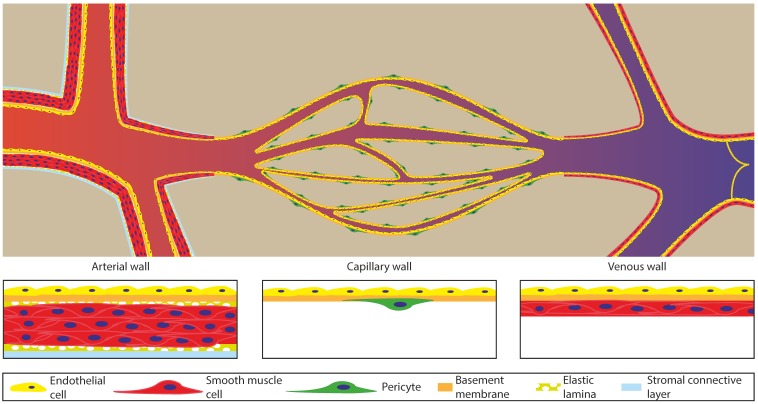Figure 1.
Schematic overview of the vasculature tree. Left: the arteries have large diameter vessels with a thick layer of smooth muscle cells. They transport blood from the heart and narrow down to transit to the capillary bed (middle) which bifurcates into smaller and closely spaced vessels to increase the exchange of oxygen and nutrients with the tissue and to decrease the required diffusion distance within the tissue. The capillary vessels consist mostly of only endothelial cells with a thin basement membrane supported by pericytes. The vessels bundle back together to form the venous part of the vasculature (right), which are again thicker and have a layer of smooth muscle cells, however not as abundant as in the arterial part. The venous system also has valves inside the lumen to prevent backflow and pumping action by the muscles around it, and it finally leads the blood back to the heart. Image inspired by [5,6].

